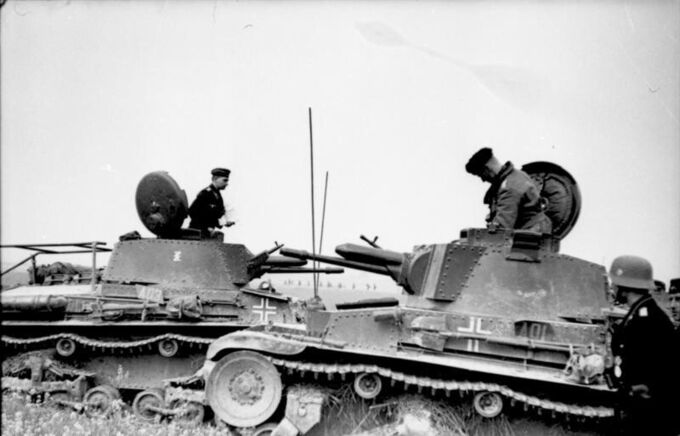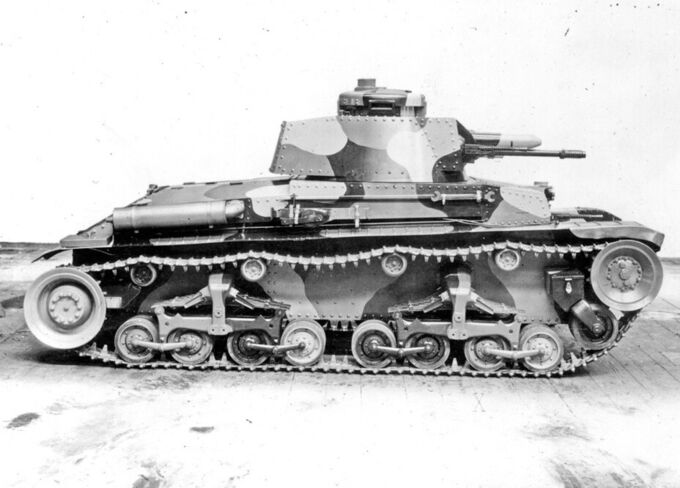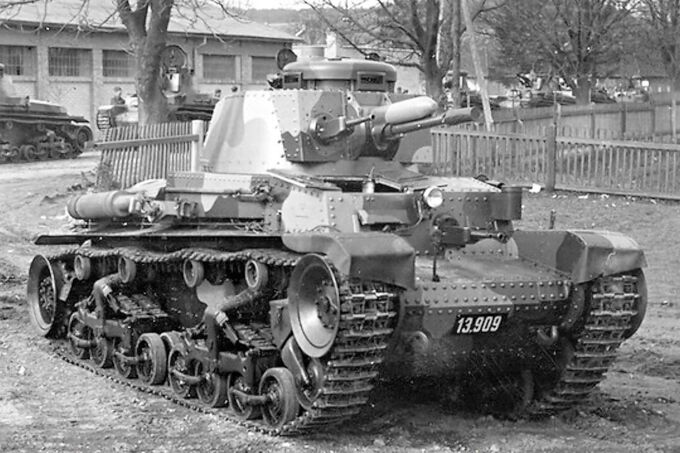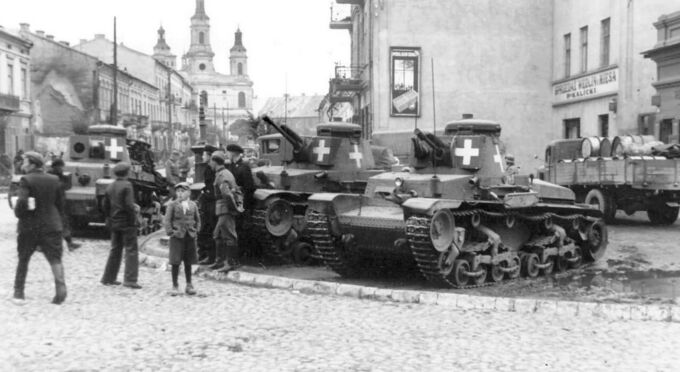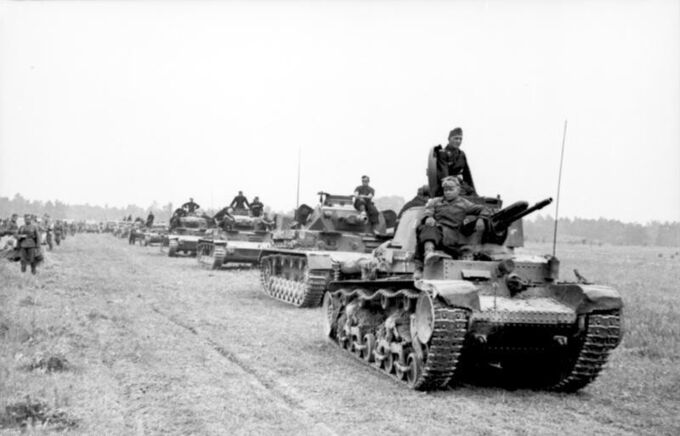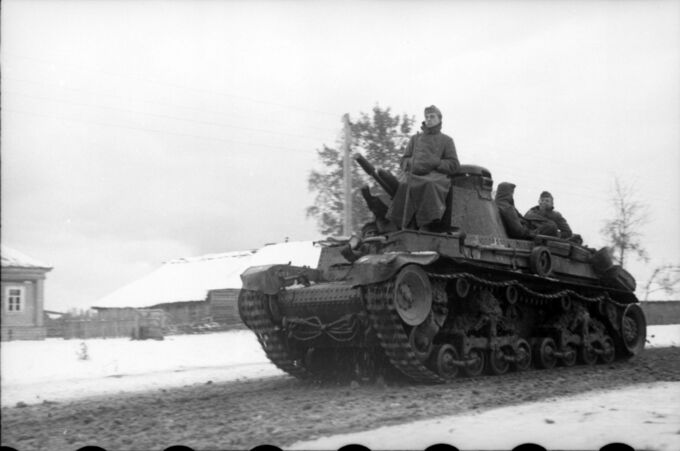This article will summarize the history of the Czechoslovak LT vz. 35 light tank, including its development and service with Germany during the Second World War. The LT vz. 35 was produced by ČKD and Škoda between December 1936 and April 1938. In German service, the LT vz. 35 was designated the Panzerkampfwagen 35(t), and remained in use until 1942.
Development and Czech Service
By the end of 1934, the Czechoslovak army had created several specifications for armoured vehicles, including the II-a cavalry tank category. Two main competitors, Škoda and ČKD, each designed a vehicle for this specification based on previous designs. The Škoda Š-II-a utilized a pneumatic steering system developed for the SU prototype light tank, while the ČKD P-II-a was based on the earlier LT vz. 34, a successful ČKD design adopted for service.
After testing in the summer of 1935, the Škoda design was selected, and an order was placed by the Czechoslovak Ministry of Defense on the 30th of October 1935 for 160 vehicles. Production was split between Škoda and ČKD, and a further 141 vehicles were ordered between May and June of 1936. Deliveries of the 298 total vehicles were originally intended to be completed between late 1936 and early 1937, but were hampered by delays in development.
In tandem with the extended development process, the Czechoslovak Army conducted long-term trials in 1937 with individual test examples of the LT vz. 35, which demonstrated suboptimal results. Due to problematic design and assembly and poor material quality, the test vehicles exhibited excessive wear. The results of these trials further reduced overall confidence in the design, and the additional orders placed in 1936 would have been cancelled had Czechoslovakia not been in need of rapid rearmament. Deliveries continued until 1938, when Škoda finished production on the last three vehicles of the order.
In service, the LT vz. 35 demonstrated fewer overall defects, with many issues resolved over the production process. Some issues remained with the vehicle’s electrical systems, but the complex pneumatic steering system functioned without issue.
Capture and Introduction
On the 15th of March 1939, Germany invaded Czechoslovakia unopposed, capturing all LT vz. 35 light tanks intact. Germany ultimately only seized 244 of these, with the remainder split between Hungary and the newly established Slovak Free State. Some vehicles were inoperable and most suffered from unresolved automotive issues. By the 1st of September 1939, a Heereswaffenamt report only listed 202 vehicles in inventory—164 in the Feldheer, 34 in the Ersatzheer (including Schule), and 4 in the Heereszeugamt.
The most significant issue with the Pz.Kpfw. 35(t) was the composition of its crew. The LT vz. 35 was manned by three crew members—a driver, a radio operator, and a commander who also served as the gunner and loader. In German service, a fourth crew member was added who would serve as the loader, alleviating the commander’s burden. However, the overall arrangement remained inefficient. The commander still had to operate the gun and lead his crew—these inefficiencies would be further exacerbated if he had to coordinate multiple vehicles as the leader of a unit.
In official correspondence, the LT vz. 35 in German service was referred to by two different names—Pz.Kpfw. (3.7 cm) “L.T.Sk.35”, and L.T.Sk.M 35. The designation Pz.Kpfw. 35(t) was only given by the OKH on the 16th of January 1940.
Deployment and Service in Poland
Despite differences in tactical usage and technical specifications, the Pz.Kpfw. 35(t) was used to supplement Pz.Kpfw. III medium tanks in German armoured units. The Pz.Kpfw. 35(t) was issued to three units in the 1. leichte Division: Panzer-Regiment 11, Panzer-Abteilung 65, and Panzer-Nachrichten-Abteilung 82. Following these assignments, some vehicles designated as Panzerbefehlswagen were outfitted with German radios, as the Czechoslovak radios were deemed unsuitable due to their lack of range and different frequencies.
When the German campaign in Poland began on the 1st of September 1939, Pz.Rgt.11 and Pz.Abt.65 fielded 75 and 37 Pz.Kpfw. 35(t), respectively. Combat records from Pz.Rgt.11 and the 1. leichte Division in general show that the survivability of the Pz.Kpfw. 35(t) was sufficient against nearly all weaponry that German forces faced in Poland—German tank crews were surprised when their vehicles remained relatively unscathed after being hit by anti-tank fire. However, the combat effectiveness of the Pz.Kpfw. 35(t) was limited by an insufficient supply of Sprenggranaten for its 37mm cannon, as its machine guns were deemed inadequate against infantry targets.
By the end of the Polish campaign in October 1939, only a fraction of Pz.Kpfw. 35(t) remained fully operational. In most, if not all cases, vehicle losses were caused by mechanical breakdowns and the lack of adequate repairs.
Service in France
In October 1939, the 1. leichte Division was reorganized as the 6th Panzer Division. A report from the 1st of January 1940 shows that Pz.Rgt.11 had 71 Pz.Kpfw. 35(t) and Pz.Abt.65 had 35, while 11 Pz.Bef.Wg. were split between the two units. Another report from the 5th of February in the same year showed a slight surplus in vehicles, as Pz.Rgt.11 had two more Pz.Kpfw. 35(t) than it was assigned. Ultimately, these extra vehicles were ordered to follow the unit in any deployments.
A request was made on the 15th of February to replace the Pz.Bef.Wg. 35(t) of the two units—citing the limited “field of view of the optical devices” as a major reason—but the request was denied on the 29th of February. Only 7 Pz.Kpfw. 35(t) were completely lost in the Polish campaign, and the Heereswaffenamt reported a total of 195 vehicles in the army inventory on the 1st of February 1940. Three months later, that number had diminished to 143, with 26 being given to Bulgaria in February and another 26 being sent away for major repairs in March.
The two units began the campaign in France on the 10th of May 1940 with 102 operational Pz.Kpfw. 35(t), but the number of fully operational vehicles had diminished to 64 by the 1st of June. The first replacement vehicles finally began to arrive in early June 1940. Delayed by the lack of rail transport, major repairs proceeded slowly through to the end of the year, by which point the overall army inventory count had reduced to 190 vehicles. Further repairs brought the count down to 189 by mid-1941.
Service on the Eastern Front
When Germany’s invasion of the Soviet Union began on the 22nd of June 1941, the 6th Panzer Division was reported to have 160 Pz.Kpfw. 35(t), though this number quickly deteriorated over the course of the year. Despite 10 vehicles arriving as reinforcements in October, only 36 Pz.Kpfw. 35(t) were still operational by the end of the month, and by the end of November none were reported to be operational at all.
The reason for such heavy losses was detailed in a report from the 6th Panzer Division at the end of October 1941—the Pz.Kpfw 35(t) lacked replacement parts as a captured vehicle, and repairs could only be conducted with spare parts taken from other inoperable vehicles. The report provides a statistic: out of 41 vehicles taken in for repair, only 10 could be fully repaired.
On the Eastern Front, the armament (or lack thereof) of the Pz.Kpfw. 35(t) became abundantly clear, being outclassed entirely by the T-34 and KV-1 tanks fielded by the Soviet Army. This, coupled with the exacerbated mechanical issues caused by cold weather, rendered the Pz.Kpfw. 35(t) completely ineffective.
By January 1942, the 6th Panzer Division reported having 22 Pz.Kpfw. 35(t) in total, of which only 5 Pz.Bef.Wg. were operational. Due to a lack of available parts for maintenance and the vehicle’s unreliability and obsolete armament, the Pz.Kpfw. 35(t) was entirely phased out of service in 1942.
Bibliography
- Jentz, Thomas L. Panzer Tracts No.19-1: Beutepanzer. Panzer Tracts, 1 Feb. 2007, pp. 4, 6, 8–9.
- Serra, Marcos. “Panzerkampfwagen 35(T) — Tank Encyclopedia.” Tank Encyclopedia, 11 Dec. 2017, tanks-encyclopedia.com/ww2/germany/panzer-35t/.
- Chamberlain, Peter, et al. Encyclopedia of German Tanks of World War Two: [the Complete Illustrated Directory of German Battle Tanks, Armoured Cars, Self-Propelled Guns, and Semi-Tracked Vehicles, 1933-1945]. London, Arms And Armour, 2001.
- Kliment, Charles K., and Vladimír Francev. Škoda LT Vz.35. MBI Publishing House, 1995.
